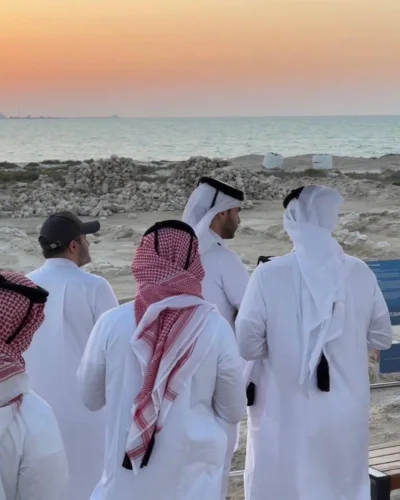Within one month of the unjustified blockade on the country in June, Qatar announced plans to raise LNG production from 77mn to 100mn tonnes per year, an increase of 30%, by doubling the size of the new gas project in the southern sector of the North Field.
New production from the North Field, which is the largest non-associated natural gas field in the world, is expected within five to seven years.
The North Field development will add a capacity of about 2bn cu ft a day. A project of this size will increase the current production of the North Field by about 10% and add about 400,000 barrels per day (bpd) of oil equivalent (bpdoe) to Qatar’s total production.
Recently, Qatar Petroleum’s president and CEO Saad Sherida al-Kaabi said the North Field expansion was moving full steam ahead to achieve the targeted 100mn tonnes natural gas production.
“The engineering part of the expansion is moving full steam ahead. We are in the initial engineering phase (of designing) for expansion. That’s going full steam ahead. It has nothing to do with the partnerships and the structure of how we are going to form the joint venture or who the partner is. That’s also being worked in parallel,” al-Kaabi said at a major media event in Doha.
Although the new North Field development will be export-oriented, Qatar Petroleum does not seem to have decided if exports will be in the form of LNG, GTL or pipeline gas.
Since 2005, QP has been conducting extensive studies and exerting exceptional efforts to assess the North Field, including drilling a number of appraisal wells to better estimate the field’s production potential.
But some sceptics have questioned Qatar’s huge investments in the LNG industry on the ground that the market now faces a glut.
The fact of the matter is that Qatar’s gas projects are in the five to seven years horizon, where a huge demand for energy has been projected globally.
Also, Qatar, which started some of the largest plants at the end of the last decade, has one of the lowest break-even prices globally.
Many argue that the push towards developing electric vehicles worldwide will lessen the dependence on fossil fuels for public transport. But gas-fired plants remain the most preferred and commonly used source for electricity generation.
And that’s why al-Kaabi said, “I see a very rosy picture in the energy market going forward.”
Qatar’s location makes it “well positioned geographically to be competitive and earn attractive returns” supplying both Asia and Europe, seen as the global sink for the fuel, according to Claudio Steuer, director of SyEnergy, a UK-based energy consultant said earlier.
Since its inception, Qatar Petroleum has led the continuous growth of the country’s oil and gas industry and has expanded its operations to many countries around the world.



